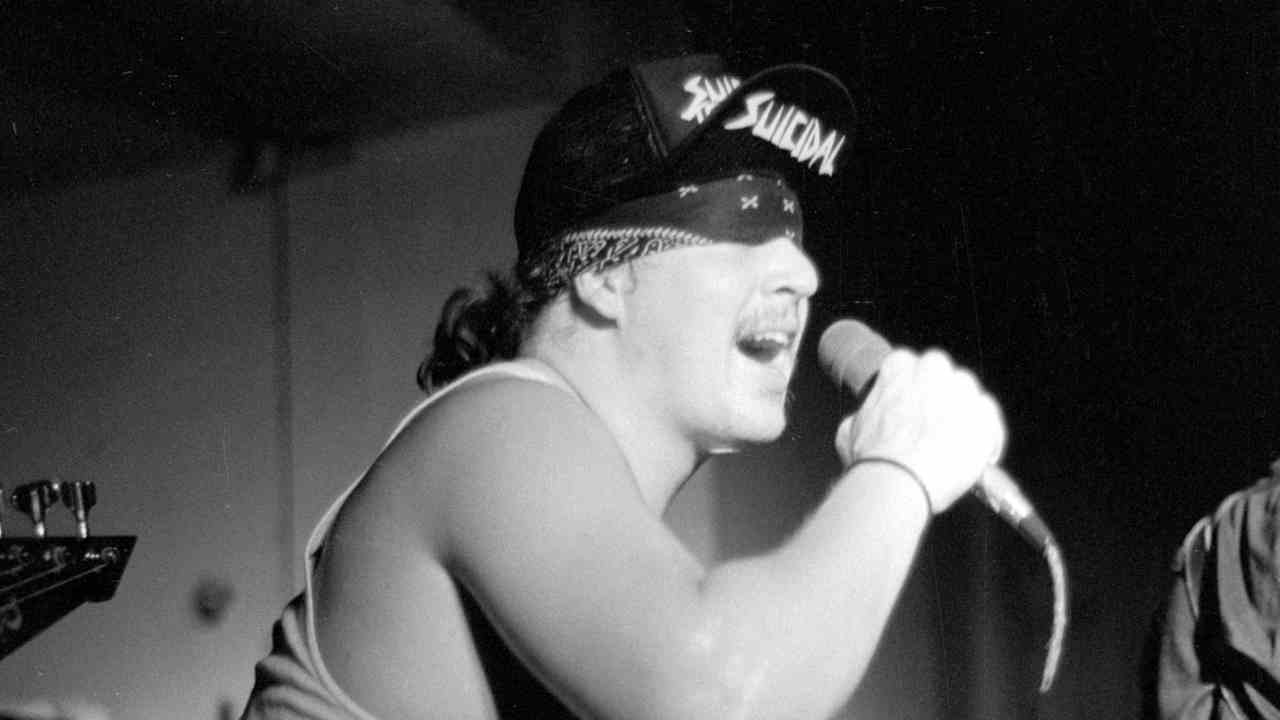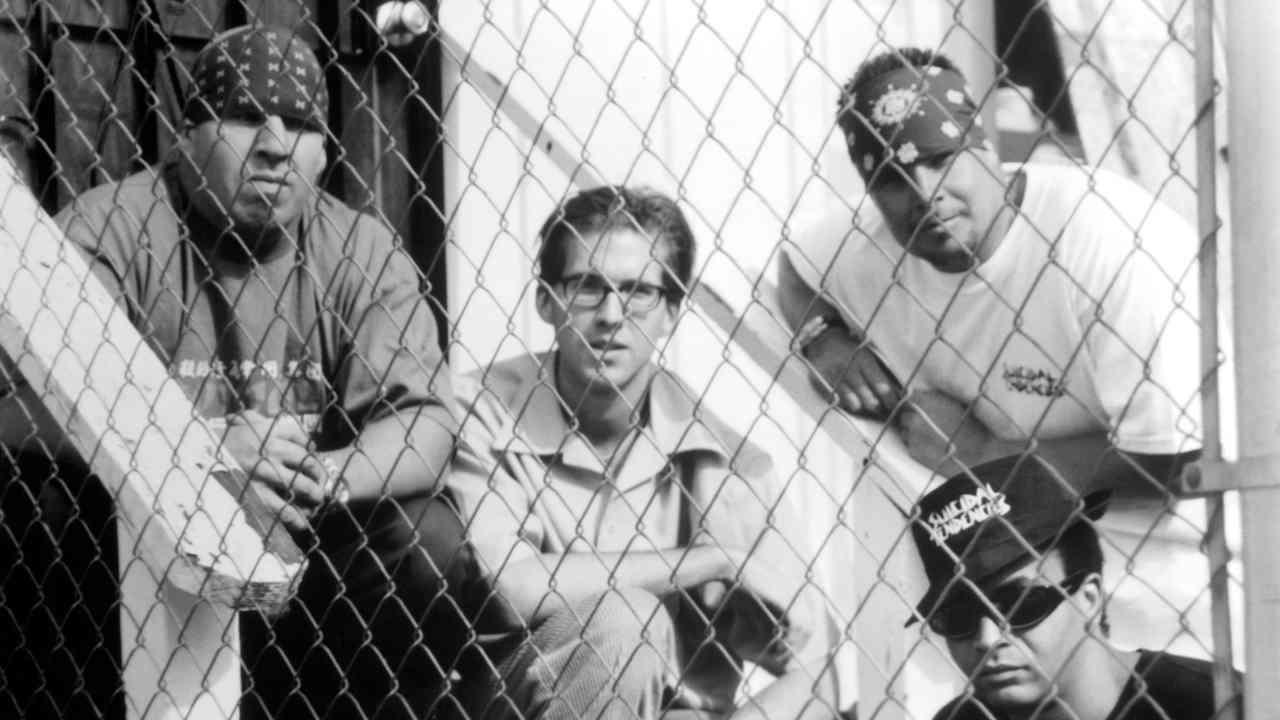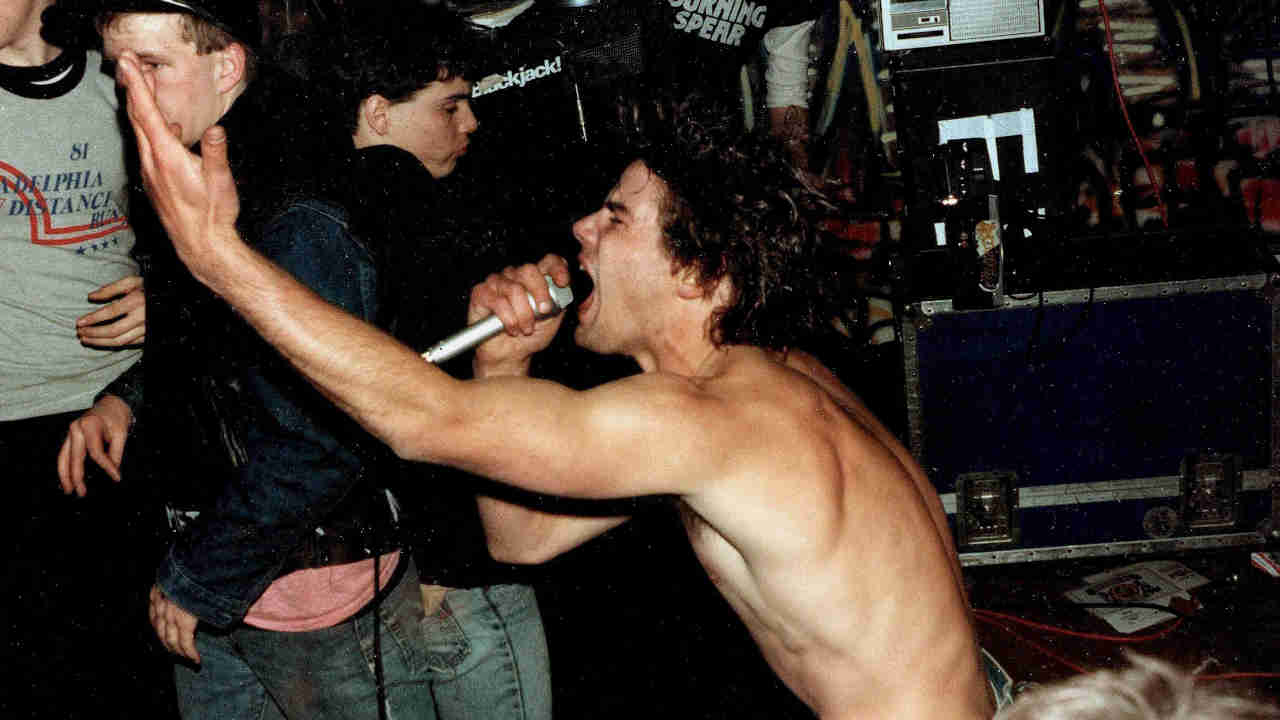
In the early 1980s, punk rock got faster and crazier thanks to a bunch of skateboard-loving kids in bands such as Suicidal Tendencies, JFA and Dr Know. Its influence even bled into metal, with thrash bands picking up on its sheer velocity. In 2008, members of JFA, Dr Know and more gave Metal Hammer their recollections of the scene that changed underground music.
“I decided to start a record label because I could see the future of punk.” says Doug Moody. He’s the founder of Mystic Records, a California-based label that released early albums, singles and compilation tracks from many of the bands that would become synonymous with the skate-punk movement of the 1980s, bands like JFA, Suicidal Tendencies, Ill Repute, RKL, DRI and Dr. Know.
“I decided to record 500 bands, and they came from all over, everywhere, even Holland,” he says. “The trick for Mystic was to give a voice to people who wanted to tell the world how they felt. You can only capture that before you have the responsibilities of bills and children. Most of the bands were between the ages of 16-18. That’s when you have the vehemence, the drive to tell the world what you really think. I saw myself in these kids, and that’s why I started Mystic.”
Moody made his fortune in the 50s and 60s, recording soul and R&B acts on his Philadelphia-based labels Herald & Ember, including some early work with influential country and blues guitarist Lightnin’ Hopkins.
“When I moved to the US from England,” he says, “The only people that would accept me were black. So that’s the kind of music I recorded. The people that played this music were dirt poor, they’d come in with holes in their trousers, and with hand-me-down instruments. Fast forward to the 1970s, when I started recording punk bands for Better Youth Organization in California, and I saw the same things – kids with holes in their clothes, and with hand-me-down instruments. They were poor. It was like the 50s all over again. And I knew they were all skateboarders, because they would come into the studio with their skateboards.”
One of these early skate bands was Dr. Know. Brandon Cruz was their first singer, although he left the band before their more well-known ‘crossover’ era, and the frontman recounts how a bunch of scruffy, angry skateboarders started an entire musical movement.

“We were all skaters before we were punkers,” he says. Cruz was from a Los Angeles suburb called Oxnard, which quickly became ground zero for skate punk. “In Oxnard, where Aggression, Ill Repute, Dr. Know and Satalg 13 all came from, we surfed year round and skated in empty pools when it didn’t rain. In 1975 or 1976, this was before punk rock, they built a skate park in Oxnard, and all the guys from Venice would come up to skate there. Some of the guys from Venice included Jim Muir and his little, little brother, [future Suicidal Tendencies frontman] Mike Muir. We all skated, and we all skated to heavy metal and southern-fried rock back then.”
The following year, however, the musical landscape changed radically. “The summer of ’77 I came back from England, and there was a band from Moor Park called the Rotters. They started playing, and by 1978 they were playing high school parties, and we would go and crash the parties. We heard those guys playing, and we said, ‘Oh, we can do that.’ The guys in Aggression were a few years older, so all us guys that would later be in Ill Repute and Dr. Know, we just sat and watched to see how they did it. Then we all sorta came together at my mom’s house. That’s where our guitar player Ismael coined the term ‘Nardcore’, and it all sorta got going from there. The band started in late 79, and it really got going by 1981.”
“The original name for the music we put out was thrash, or skate thrash,” says Doug Moody. “Punk music was Exploited, Discharge. The bands coming from England, and the bands that copied them were punk bands. The stuff we were producing was an original form of Californian music, thrash, or skateboard punk. It originated here.”
The movement was aided by the emergence of LA hardcore bands like Black Flag, The Circle Jerks and the Adolescents, bands that were fast and raw, which replicated the feel of skating. Soon, skate punk bands starting cropping up all over California and, indeed, the rest of the country. Arizona’s JFA (or, more formally, Jodie Foster’s Army), are one of the longest running. Lead singer Brain Brannon recounts the early days of the scene.
“You had bands in Orange County and LA, you had Oxnard, which is central California, you had skate punk coming out of San Francisco, like the Drunk Injuns, San Jose had a big scene. They were sprouting like weeds. It was going on all over. It wasn’t really a movement until Thrasher magazine started putting it all together. Thrasher was a really big catalyst in helping everybody join together. With it you can find out what town has what band so you can hook up and tour, go their spots to skate and hang out.”
At the same time skate punk began developing as a loosely-knit but far-reaching community, a per nicious influx of gangs crept into the LA skate punk scene. The most notorious were the Suicidals, known as much for their low-slung bandanas as their propensity for brutality. Venice Beach skate thrashers Suicidal Tendencies were, naturally, at the eye of this particular hurricane. Their shows became so violent that by 1983, they could no longer even play in Los Angeles.
“Suicidal blew up ridiculously huge”, says Brandon Cruz. “A lot of the East LA guys delved really deep into the gang lifestyle, to the point where you couldn’t even refer to them by their real names anymore, they had all these nicknames and stuff. Back in the 80s, punk rock gang fights were, at the worst, somebody with a stick. They were fistfights. But after a while, people were getting jumped for no reason, and it just got stupid. The violence in that scene is legendary, but it was brutal to be a part of. I’m a small guy, but I got punched a bunch of times at gigs from people where I didn’t know who they were or what I’d done. It was like a random thing.”
As if random face-mashings weren’t enough, around 1983-1985, a strange new influence crept into skate-thrash: heavy metal. Seemingly overnight, scores of once-staunchly anti-metal punk bands began to add scorching lead-guitar solos and wailing vocals into their songs. It was a like some sort of lead-infused virus, and it claimed an impressive roster of skate-friendly punk bands, including Dr. Know, DRI, Suicidal Tendencies, Corrosion Of Conformity, Septic Death, Agnostic Front, SSD and many others. Brandon Cruz was one of the few purists who refused to ‘go metal’.
“I don’t know how it happened,” he shrugs. “I just remember in 1983 hearing the initial rough versions of songs that were going to be on our Plug In Jesus record and looking at our guitar player Kyle and realising, ‘Wow, he’s growing his hair out and listening to a lot more Mötorhead and Black Sabbath lately,’ and this isn’t what I thought we were going to do. And at the time, I didn’t like it. I was like, ‘I don’t sing that high, and there’s too many leads’. You look at it now, and they’re great songs, brilliant songs, and they hold up really well, but back then, metal didn’t have a big spot in punk rock. Sure, it had its roots in metal, but they were so twisted around that they were no longer recognisable. These guys were trying to make it recognisable again. Now, everybody had toured together. Dr. Know and Corrosion Of Conformity were two bands that we really got along with. DRI, as well. I don’t know if it was an underground, behind the scenes effort, where everybody said, ‘Let’s all do an album at the same time and make it sound like this,’ or if it was just a fluke.”

Whatever the reason was, Brandon Cruz was not having any of it. “I didn’t quit exactly because of the music they were coming up with, but it helped. I just went, ‘Dude, I’m not growing my hair to my butt again, forget it. We’re not Dio.’”
Doug Moody was equally displeased with the crossover movement, and offers his theory as to how it happened.
“There was a distributor in New York called Important,” he explains. “Originally they imported records from England, and then they took notice of the punk stuff we were putting out, and they became distributors for us. Well, what they did was go to all these groups and convince them that they should be heavy metal. They convinced El Duce, Dr. Know, RKL, all these bands. It was just ridiculous. So all these bands tried to become heavy metal because this is what the distributor told them, that punk doesn’t sell. Important destroyed the growth of punk rock by turning it into heavy metal. And then it went belly up.”
With their propensity for surf-riffs and paisley smoking jackets, it was unlikely that JFA would ever go metal, although even they fell under the spell of thrash metal kingpins Metallica.
“Our drummer Bam Bam was really into Metallica when they came out,” Brannon says, “And he got our guitar player into them. We listened to them on tour a lot, but as far as going full-on metal, nah.”
He does, however, offer a possible explanation why so many bands crossed over into metal: in the 1980s, being a skate-punk was rough work.
“Basically, everybody hated punks in the 80s, which made it kinda cool. It weeded people out, because if you just wanted to be cool, you certainly weren’t going to dress punk, because you’d get your ass kicked. Guys in Camaros would throw bottles at you. Cops and old ladies would chase you out of pools and backyards, and you spent a lot time hiding in the bushes. It was us against the world back then. Now, of course, everybody is punk,” he laughs. “You see old ladies walking around with Social Distortion t-shirts and stuff.”
It is true that in the decades since the birth of Nardcore, skateboard culture has gone mainstream, and a whole new generation of skate-rock bands have emerged. Newer acts such as NOFX, Pennywise and Strung Out have benefited from this thanks to events such as the Warped Tour and freely cross-pollinate the genres at will.
Yet several of the original skate-thrash bands are still in operation today and the music made by them still inspires the same sort of delirious mayhem from their fans. Dr. Know disbanded in 1991 but were reformed by Brandon Cruz in 1998. Although he’s glad the days of LA hardcore violence are over, Cruz still enjoys the odd burst of skate punk chaos. “When we first got back together,” he says, “Our first few gigs were just mayhem. We had a gig in San Francisco that was a riot, literally. We had equipment flying through the air, the drums were upside down, amps were on the ground, people were fighting on stage, and somehow, we kept playing. They weren’t attacking us, they were loving it. That was their reaction. I was like, ‘Wow, this is pretty cool’. So we kept doing it.”
Brian Brannon shares this positive sentiment. “We’re just still having fun. JFA started in 1981, and the objective was to play music for our friends and to skate as many pools, ditches and pipes as possible, and that’s what we’ve been doing ever since. We said we’d quit when it’s no longer fun to do, and right now, it’s more fun than ever.”
Originally published in Metal Hammer Presents The Story Of Thrash







